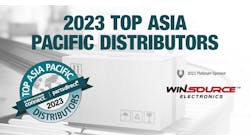As the New Year begins, one trend that electronics purchasers will need to keep a close eye on is supply base consolidation.
In 2015 and 2014, there was an unprecedented spate of mergers and acquisitions in the electronics supply chain, some involving very large semiconductor and other component companies. Examples include Intel acquiring Altera, Avago Technologies buying Broadcom, Cirrus Logic purchasing Wolfson, Cypress acquiring Spansion, NXP acquiring Freescale, and Cornel Dubilier’s purchase of Illinois Capacitor, among others.
Find authorized distributors on SourceESB.comThe consolidation in the electronics supply base is occurring because the industry has matured. It has become almost impossible for most chipmakers and other component manufacturers to achieve the double-digit sales growth they once did in the past. As a result, they are acquiring companies to boost revenue or obtain product lines that they did not have before in an effort to increase future sales growth.
Most industry analysts say consolidation in the electronics supply base is not over, although in the future, acquisition targets will be smaller suppliers.
There seems to be two schools of thought among buyers about what the recent wave of mergers and acquisitions means to the electronics supply chain. Some believe it will result in a smaller, but more financially healthy supply base. Merged suppliers will combine their capabilities and be in a better position to innovate and develop needed new technologies. With a smaller, financially stable supply base, buyers at OEMs and electronics manufacturing services (EMS) providers will be able to work more closely with suppliers, resulting in closer relationships, according to some purchasers.
However, some buyers lament consolidation, saying that it will mean less competition, result in the discontinuation of products, and fewer component choices. Less competition means it will be harder to negotiate favorable terms with suppliers, including price concessions, according to some buyers.
Both camps have a point. In many cases, merged companies will eliminate overlapping, redundant product lines, resulting in fewer choices for buyers and weakening a buyer’s ability to negotiate. But consolidation may allow the two companies to achieve greater efficiencies, improve profitability, and become financially stronger so the newly merged company can invest in new technology and capacity as needed.
While there will be less competition, there should still be enough suppliers to go around to provide buyers a choice of products. In fact, before the recent merger-and-acquisition activity among suppliers, many strategic buyers at OEMs and EMS providers had already reduced the number of suppliers for key components from 10 or more in years past to just three or four in many instances.
For some buyers, consolidation means they will have to search out and qualify new suppliers to replace the ones that were acquired by a larger company.
And although there has been a rash of acquisitions recently, consolidation is not new in the electronics supply chain. For more than 20 years, the EMS and electronics distribution industries have been consolidating. For instance, Solectron and SCI, pioneers in the EMS industry, were acquired, as were other contract manufacturers, including Manufacturers Services Limited, NatSteel Electronics, and many other smaller contract manufacturers.
Buyers of a certain age may remember buying parts not just from Arrow, Avnet, Future, and TTI, but also from Hall-Mark, Marshall, Wyle, Decommun, Lex, Zeus, Anthem, Bell, and other distributors. Those distributors were acquired by other large distributors, mainly Arrow and Avnet.
Despite consolidation in the EMS and distribution industries, there is still plenty of competition for a buyer’s business, and purchasers have ample choices for parts, value-added, supply-chain and manufacturing services. The same scenario is likely with semiconductors and other components.








